Two Queens On What It's Like To Live And Breathe Drag In Wisconsin And New York
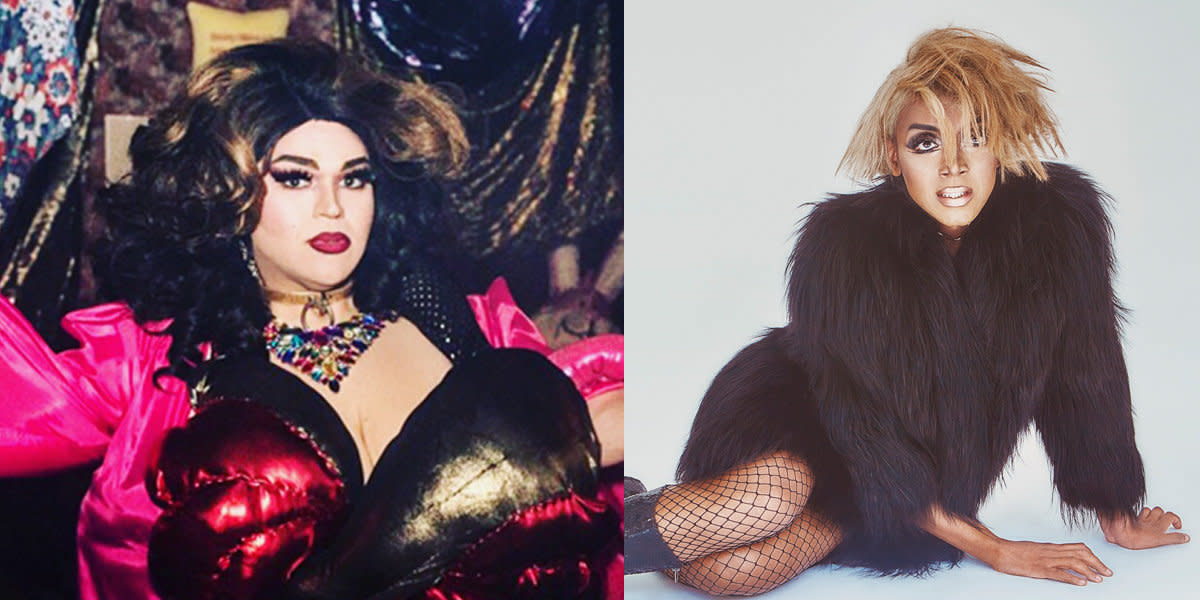
Welcome to ”The Story We Share,” a series of Q&As that profile two people with similar identities ― but who live in very different places. As part of HuffPost’s Listen To America tour, we’re exploring how people’s lived experiences overlap and diverge depending on their zip codes. What is the “American Experience?” It depends where you look.
***
From “RuPaul’s Drag Race” to Miley Cyrus’ music videos, drag has certainly become more “mainstream” in the last few years.
But for drag queens outside of the spotlight of pop culture fame, the experience of creating and performing a drag character differs greatly depending on the location that a queen lives.
Things like cultural attitudes toward LGBTQ people, venues that actually hire drag performers and safe and affordable transportation all play into the experience of drag from region to region in America.
In this edition of “The Story We Share,” Stephanie Stone, a veteran drag queen in the New York City scene and Toyota Corona, a greener queen hailing from Milwaukee, Wisconsin discuss their respective experiences doing drag in their individual communities.
In a big city, Stephanie can support herself full-time in drag, while Toyota has to rely on other sources of income, such as teaching or temp work, for survival as a queen. They’ve also developed as performers in two very different eras of drag culture ― Stephanie started her career during the queer performance boom of the Lower East Side and Toyota in the years since “Drag Race” has exponentially increased interest in drag as an art form.
Read below to learn more about how these two are exceptionally different in a number of ways ― but while sharing so much.
How did you get into doing drag? Where were you living?
Toyota Corona (Milwaukee): I started doing drag about three years ago on a whim. My good friend was moving away and I dressed up as her for the going away party and it stuck. Pretty soon I was doing it weekly for karaoke at a bar here in Milwaukee. We only have one gay club here in Milwaukee, LaCage, so that was really the only place to go to be seen and to see drag regularly. I entered and swiftly lost an amateur competition there and shortly thereafter started adventuring to Chicago to do drag in a big city. Trannika Rex was kind and dumb enough to book me in the pre-show for her weekly Drag Matinee. My “big break” came when I entered the first round of Trannika and Nico’s Competition “Crash Landing” and somehow won. From there I was booked more and more in Chicago and Milwaukee.

Stephanie Stone (NYC): I came up in the Lower East Side in that whole era of a bunch of smaller bars and giant super clubs. And then, of course, after Giuliani all of that changed (laughs). But I think the same running thing was always, if I wear this make-up, do this thing, wear this dress, do that I’ll get to a certain point in life. And that isn’t the way life really ever works out.
I didn’t start drag until I came here to New York to go to school and then just like everybody else, I was doing it at Halloween and then Halloween started to stretch to doing it more often. My first big [moment], when I really consider me starting my drag life was 2007 when I won Miss Fire Island. Then I kind of became a professional drag queen because I had a title.

What is your first memory of drag in general? Either at some earlier point in your life, or the first drag queen you ever saw?
Toyota Corona (Milwaukee): I think like a lot of baby homos, my first exposure to drag was from the ’90s movies like “Mrs. Doubtfire,” “To Wong Foo,” and “The Birdcage.” I remember being 8 years old, wearing my mom’s makeup with towels as wigs and sheets as dresses to put on shows for an audience of one in the mirror of the bathroom while my family was asleep. I didn’t really get the urge to do this again until college, but once I started I knew it was what I was supposed to be doing.
Stephanie Stone (NYC): First drag queen: Crow Bar in the East Village, Candis Cayne performing. Pitch black, you couldn’t see your hand. I remember a flashlight came on and all you saw was her face and then her heel going next to her face over and over again doing high kicks and I was like “what is that! It is FABULOUS!” And with Candice you saw hair, face, heel. It was incredible! It was incredible.
What would you say are some of the major differences in the experience of drag for queens living in a smaller cities and towns versus queens living in larger metropolitan areas?
Toyota Corona (Milwaukee): I feel like although the scene is smaller [in Milwaukee], there’s still a lot of competition to stand out just as it would be in a bigger city. There’s always someone younger that’ll take your booking for less money and so it’s a good inspiration to constantly network, build your brand, and make sure that people keep coming back to see you specifically. A lot more queens here do drag as a hobby rather than as a profession. Thanks to the mainstream popularity of drag on TV and social media, drag artists in smaller cities can still see the whole landscape of drag and be inspired by it. Queens here follow the same makeup trends, buy accessories/wigs from the same brands, and get inspired by the same things that big city queens do.
Stephanie Stone (NYC): My heart goes out to [queens in smaller towns and cities] because I can only imagine how hard that is. Even with this idea of “as far as we’ve come” – I know better (laughs). I know better. It’s what we’re going through right now – it’s always there in varying degrees. The bullies, the haters, the harassment of all kinds – they’re having to deal with that and it never goes away.
But the same people that called me sissy and faggot are calling her sissy and faggot – it’s just a different way. It’s a very insidious drip, drip, drip that’s constant on a person and you have to be strong and you have to fight.
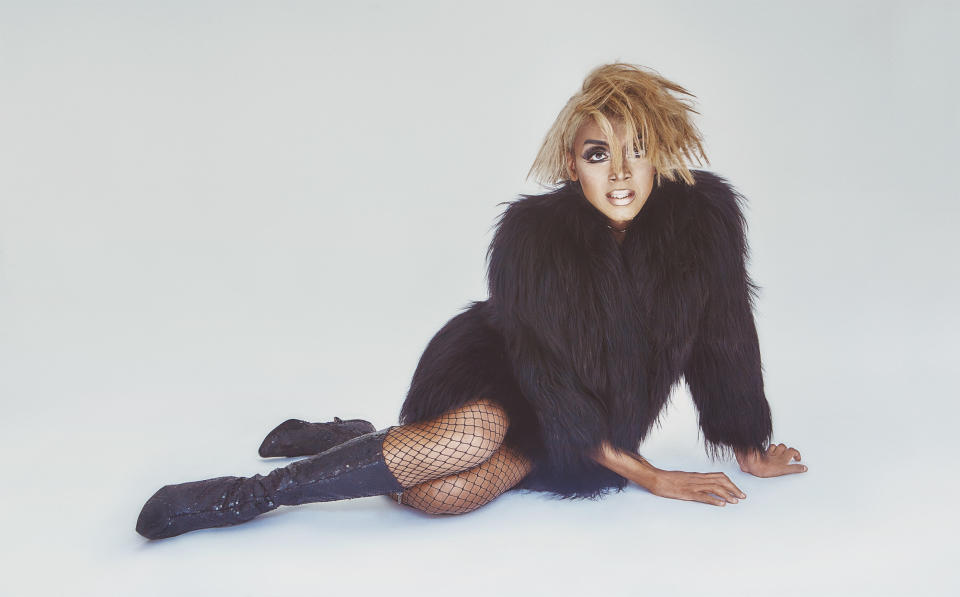
How do you think access ― things like access to performance venues, costuming, etc. ― differ for a queen living in a smaller city in the Midwest, and a queen living in a more metropolitan area?
Toyota Corona (Milwaukee): There is a definitely lack of access to opportunities here in Milwaukee compared to a city like Chicago. In Chicago, you can see drag probably every night of the week. There are tons of venues and new shows popping up all the time. In Milwaukee, there are so few LGBTQ spaces that the shows are booked quickly or have rotating casts that are difficult to enter. But I found a home bar and drag family in D.I.X. two years ago.
We don’t have the same high-fashion designers, photographers, hairstylists, etc., living here and working with queens like bigger cities do, but we do have dedicated people working behind the scenes to make sure we look good. We’ve got talented people who might not get the recognition they deserve because the scene here is smaller.
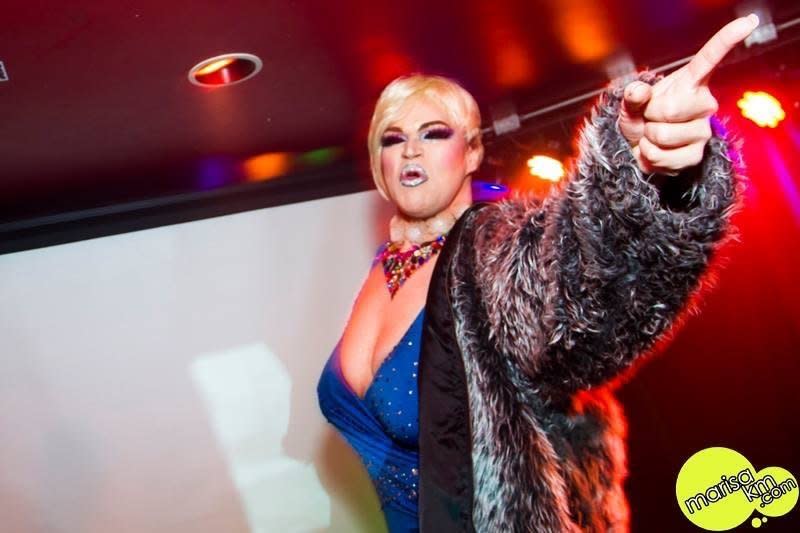
Stephanie Stone (NYC): What’s great about everything is that [queens in small towns] can use Amazon. I buy my shoes on Amazon. Back in the day there was not that ― so there’s a lot of advantages that I think a drag queen [in a small town] would have where she can get a lot of things in her house where she doesn’t even have the embarrassment of having to go and try them on ― it’s a whole situation because you’ve had to sneak and hide in the closet to kind of put this stuff together, whereas she can order it in a box and it comes straight to her house and she looks at a tutorial and it shows her how to use it. That’s fantastic, I think more power to that.
What about benefits and challenges?
Toyota Corona (Milwaukee): It’s easy to get out of the “no one knows me” stage of drag when you live in a small city. After a few times coming out in drag, I’d met and had face time with most of the key players in this city. In a bigger city with tons of queens, it’s hard to stand out at first and it’s harder to network when no one remembers who you are. There is a sense of camaraderie in a small city like Milwaukee ― but the other side of that coin is a fierce competition because there are only so many gigs available.
Stephanie Stone (NYC): Well now there’s a billion drag queens. Before there were four (laughs). So now you have to really set yourself apart. There are more opportunities... but then there’s more opportunities for everybody. As we all know, in this business, the tide changes and after drag queens there will be something else and everyone’s gonna gag because it was really easy and then it’s not going to be so easy. It’s kind of like those paper plates they give you in elementary school. They put the glue on it and then the glitter and then they shake it off and not everything sticks ― that’s it baby (laughs). You have to be prepared for the good times and the high times. There’ve been times when I worked crazy and everybody loved me and there’s times where I couldn’t get a gig at a gas station.

What is the queer community generally like where you live?
Toyota Corona (Milwaukee): Milwaukee has a decent-sized gay population, but a pretty small queer community. They’re not the same thing. Today people want to wear the queer identity as a badge but are still stuck in patriarchal and homonormative cycles of behavior. It’s not queer to slut-shame and to only fuck people who look just like you. There is a circle of lovely queer animals that I’ve found here in Milwaukee, but there’s nothing like queer culture in a big city. In Milwaukee there’s still a stigma of shame around sex, around nudity, around owning your body. A year ago someone scoffed at me when I offered them poppers but in Chicago they scoff if you don’t bring them out soon enough. I’m happy to help push back against these stigmas and puritanical ideologies and I’ll be as brazen and sexual and free as I need to be to inspire the people.

Stephanie Stone (NYC): It’s different. It’s nice because it’s a little bit more relaxed here. I know that you’re nervous when you come to your first New York club, but after awhile it gets into this cozy little groove and it’s a nice thing because you have the relaxation. Like, we’re in this bubble – you’re in the bubble, you’re in a club with gay people, you’re leaving with gay people, you’re going home to your gay roommates, you’re going to your job where everybody knows you’re gay ― it’s a very, very different thing as opposed to [elsewhere]. I have lived many years of my life where I literally am very conscious of “I’m in a bubble. I don’t know anyone outside of this bubble.” So you have to be careful to always realize that there are other people in the world.
What is your relationship like with the straight, cisgender community as a drag queen?
Toyota Corona (Milwaukee): I’ve never been a part of straight cis culture, so I try to bubble myself away from them as much as possible. Thankfully, most of the good ones venture to LGBTQ spaces and warmly embrace my fat tranny ass because it’s my turf. I’ve gotten more harassment and hate from cis gay men than I have from cis straight people. There’s always the oblivious Beckys and Chads that come into a drag show to gawk and giggle with their friends, but I feel like I do a pretty good job of educating them on consent and drag show etiquette.
And many straight, cisgender men (and one woman, hey Yvonne!) have been kind to me, sexually, so I guess they’re not completely useless. Aside from getting boned I really don’t waste time on the opinions of straight people.
Stephanie Stone (NYC): I love them! (laughs) We wouldn’t be here without them. I’m very, very lucky I think because of my social media and the things that I do and the things that I say, it’s pretty democratic. And so I’m lucky to have very smart, creative dynamic gay people in my life and vice-versa, straight people in my life that both will comment on the same post or thread or think about things in the same way I’m thinking about them. I think that’s wonderful. I mean, I know some really fierce straight women who are just beyond fabulous ― beyond! They go to the clubs and come and see me and do everything else ― just like everybody else.

Do you think your drag is influenced by or a product of where you live? If you lived somewhere else, do you think your drag would be different?
Toyota Corona (Milwaukee): I think I would be a bawdy, sexual, blackout mess in any city. Milwaukee is a smaller city, but it’s still a city. Wisconsinites are Midwestern people with values leaning more towards the conservative side of things, but I’m still a ball of filth with big tits, no ass, and a lot of sass. If I lived in, like, a rural town, I don’t think I would be able to get away with a lot of what I say and do, but in Milwaukee, they get me and embrace me.

Stephanie Stone (NYC): I don’t think it would be any different (laughs). When I was growing up, I was very inspired by the socialites in the New York scene and carrying yourself a certain way and acting a certain way and all of that stuff. I worked around those women and I saw them and I like that ― and I like the power and I like all of the glamour behind it ― I love it! It’s so great. If I was going to see somebody in say Ohio, I would still wear a giant beaded caftan and I would still do the same thing
Are you able to support yourself full time as a drag queen?
Toyota Corona (Milwaukee): Absolutely not. Even when I had multiple gigs per month with my name on them, it’s still only a few hundred dollars a month. I don’t know anyone in Milwaukee supporting themselves solely from drag. In contrast, there is an echelon of queens in Chicago who only do drag. Even there it’s not the norm. I don’t know what would have to happen in Milwaukee to make it viable for me to live off of drag, but I’m already exhausted from thinking about that hustle. I used to think drag was the only thing I wanted to do, but now I realize it’s just one expression in my arsenal.
Stephanie Stone (NYC): Yeah. It hasn’t always been like that, though. I worked retail for years and I always had other jobs, but for most of the time I’ve always been able to do full-time. It’s interesting, that question never really came up until there were all of these drag queens. It’s so funny to me because I was doing that long before, and now that there’s all of these drag queens everyone is constantly asking me, “are you able to support yourself?” And I’m like yeah because I’m not doing gigs that are $50! (laughs)
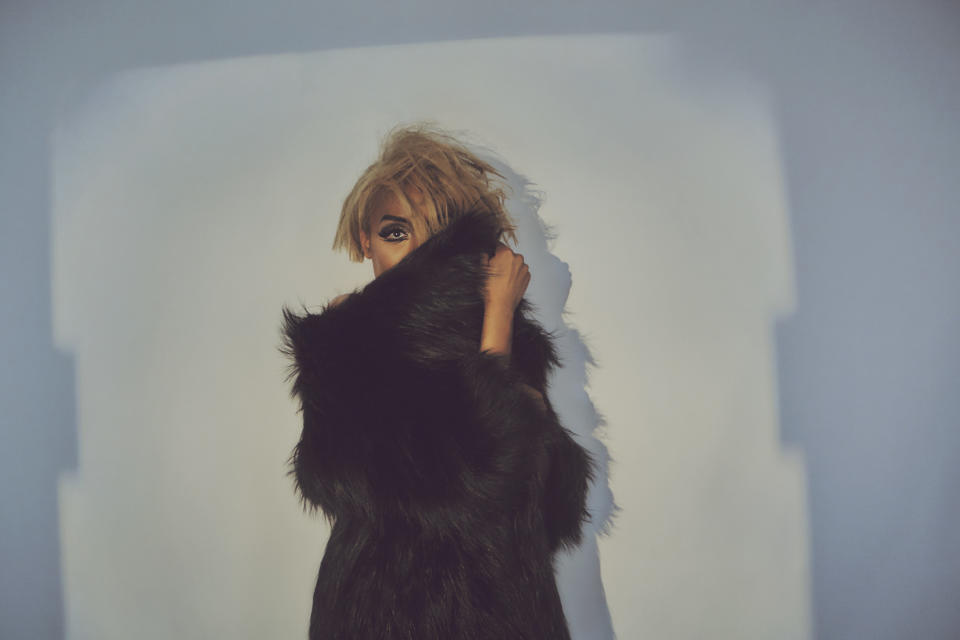
Have you ever felt threatened or experienced violence because of your identity as a drag performer?
Toyota Corona (Milwaukee): When I was first starting drag, my friends and I went to Walgreen’s after a night out to grab some hot pockets and makeup wipes. Someone standing outside made a comment about me that I didn’t hear but my best friend’s little brother did and he told the guy to shut up. When we came out, it happened again and this time it was escalated into a physical alteration with my friend’s little brother getting pulled out of the car, my other friend screaming at people to turn over his phone that he dropped, and me yelling “SIR PLEASE” in a vain attempt to break this all up from the driver’s seat. Eventually the cops came and we left and were able to laugh about it, but it quickly clicked in my mind that not everyone was as happy with me finding this self-expression as I was.
Since then I’ve only been harassed by cab drivers and straight guys at the bar, but that usually ends with free rides or free drinks and I’m all about a good deal.
Stephanie Stone (NYC): I guess so… but there’ve been so few instances of it. I think I carry myself in such an authoritative way, but that doesn’t really mean anything ― that doesn’t bar you from that kind of violence, especially with misogyny the way it is in the world. But I think that I’ve just been lucky.
Have you ever considered moving elsewhere for your drag career?
Toyota Corona (Milwaukee): I’ve given the thought of moving to NYC and pursuing drag a thought here or there, but I would never make it. There are so, so many talented queens and already such tight-knit mini-communities in different pockets of the city that I’d be overwhelmed immediately. I think Milwaukee is the speed I need right now for where I am mentally and emotionally. Chicago will always be just a short train ride away when I need to get re-energized with the vitality of a big city, but until them I’m excited to get the chance to rebuild my friendships here and reestablish (or honestly just establish for the first time) Toyota Corona as one of the best entertainers in this city. So book me, y’all!
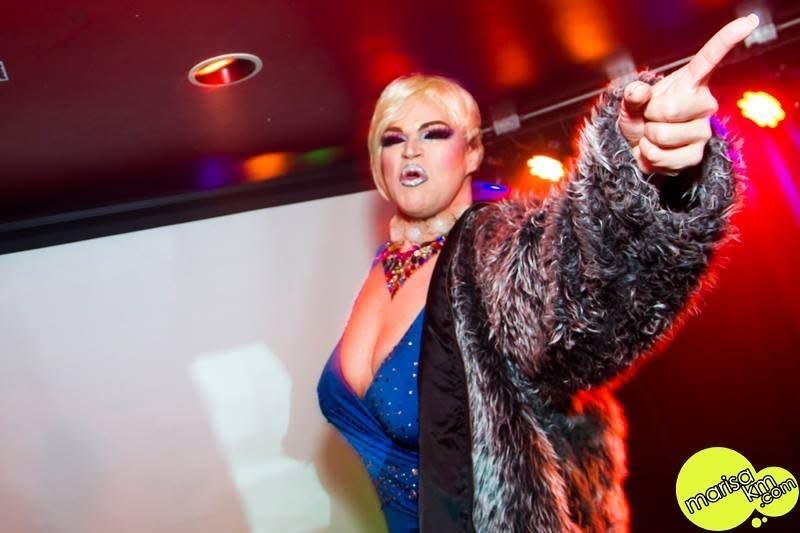
Stephanie Stone (NYC): Well, I love Paris. Who doesn’t want to do drag in Paris? Come on! It’s Paris ― it’s the Moulin Rouge! That’s definitely what I would want to do. The only thing is their nightlife isn’t that big. It’s very small there. It’s getting bigger, but it’s just a different way of doing it. Every city has it’s different way of doing things.
But I’ve just been a New Yorker ― I am. I’ve tried, I think of other things and I can’t (laughs). I’m a tried and true New Yorker ― I’m the person that when you’re on the plane I start tearing up when it comes back into the city. My Carrie Bradshaw moment.
If you could give yourself a message as a young queer person or a baby drag queen, what would that be?
Toyota Corona (Milwaukee): Start Hormone Replacement Therapy now. Rip the bandaid off that you’re trans with your friends and family as early as possible because it’s gonna be so hard on you and everyone you know and you’re gonna be sad all the time if you don’t. You can skip college because that was a waste of time, or if you do still go, do the party thing more because you sat home a lot. And finally, yes, you still love Britney Spears and The Spice Girls now as you did then but when Ginger leaves, it’s gonna break your fucking heart, kiddo.
Stephanie Stone (NYC): Put on your makeup stronger than you think, girl! I mean, I think every drag queen thinks that. You always think you can go by drugstore makeup and put on two little things and think you’re fabulous. But no, you need full coverage.
Also: Listen to yourself. Not anybody else.
This article originally appeared on HuffPost.


